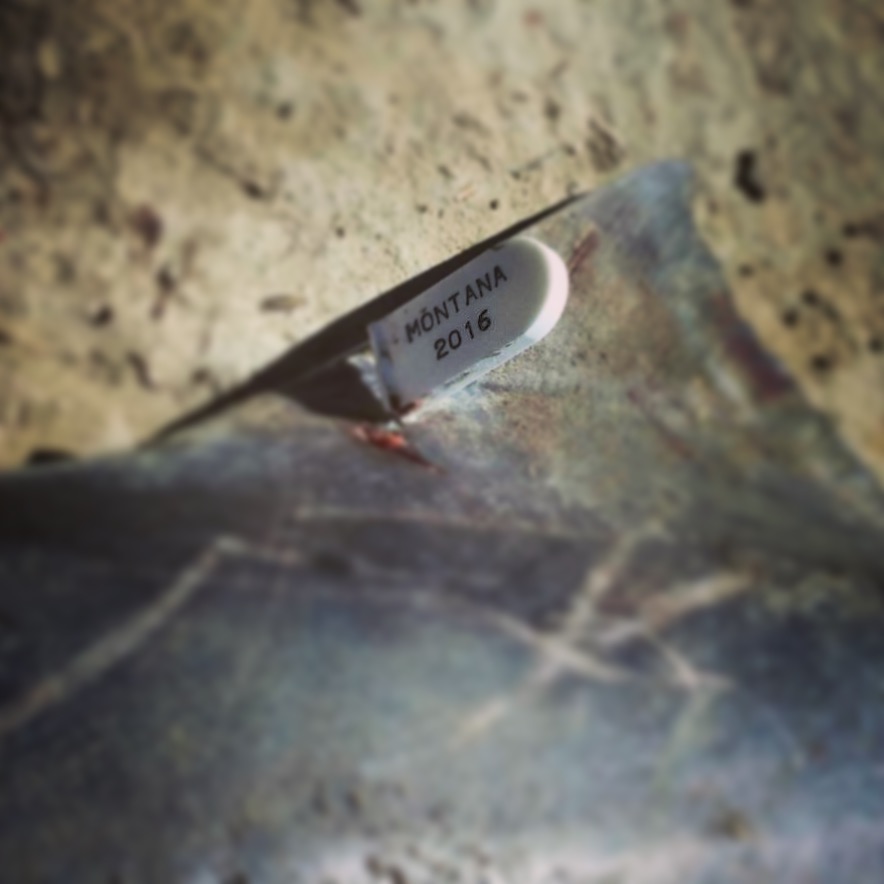Instead of dealing with the insane crowds and parties that amassed from the first come, first serve mentality of previous paddlefish seasons, Montana FWP elected to make the Upper Missouri paddlefish tag draw only this year, and as luck would have it, I was one of the 750 or so people who drew the tag on its inaugural year.
My fly fisherman friends liked to joke about how easy it would be snagging one of these prehistoric giants, as there's "no skill" involved in snagging, but as I soon found out, it was a lot tougher than it seemed it would be. Finding the right rod, the right tackle, learning how to tie the treble hooks correctly, etc. etc. all took quite a bit of time and dedication. The biggest challenge was finding the right spot and the right time to fish for them. As the river flows increase, these old dinosaurs will swim upstream to spawn, and with that, the fish is on.
And yes, I did say dinosaur. There are fossil records of paddlefish dating back over 300 million years ago. Even having survived for that long, they are now sadly considered a threatened or vulnerable species, meaning they may someday end up on the endangered species list if current trends persist. Then, why, you may ask, did you just harvest one? Once overfished for their caviar, today habitat loss is a huge threat to them and many species considered borderline threatened or endangered, and the American paddlefish is no different. Having uninterrupted, free flowing rivers is critical for their survival, and also why they only remain on select areas of the Missouri River basin to this day. Thankfully we have Montana and the Missouri River breaks, where I caught my fish, which has a few hundred miles of free flowing, uninterrupted water flowing from Fort Benton, MT to Fort Peck Reservoir. This is perfect habitat for these fish, allowing them to swim freely upstream every year to spawn and play grab ass, or whatever a paddlefish does to make babies. My friend Lance may be able to tell you more information on that if you're interested, as he is a fish biologist who tags these fish (check out this video) every year, and who I obtained a little information on how and where I might be able to hook onto one of these big guys. Essentially, the Missouri River Breaks boasts an extremely healthy and numerous population of paddlefish and catching them allows biologists to weigh, measure, and age all these fish that have been caught in order to get a good sample to see how the population as a whole is doing. My particular fish had a jaw sample taken (right side of jaw in picture above), and hopefully within a few months, I'll receive a letter in the mail explaining how old this particular fish was. Essentially, unlike the Japanese fisherman in "Whale Wars", these caught fish have tissue samples and data that do go to scientists and biologists for the betterment of the species.
When you draw the tag, you can actually fish and catch as many paddlefish as your heart desires during the open season as you are also issued an over the counter catch and release permit, but you can only keep one with the tag. When handling those you aren't keeping, Montana FWP urges fishermen (under penalty of a fine) to keep the fish partially submerged and to release it as quickly as possible, ie. no long, exposed photo opportunities as these fish are in the middle of spawning and mistreating them could ultimately lead to their death. I knew I wanted to keep a fish, but I wanted to keep a particular fish, more specifically, a large, old male. Harvesting males will theoretically keep females and their eggs in the rivers to continue breeding and allowing the next generation of paddlefish, and although the taking females is taken into account by FWP when issuing tags, I couldn't see myself taking a breeding female out of the gene pool when I could just as easily harvest a large older male. Females can be more desirable as they grow much larger, but as I've been told from multiple fishermen, the amount of meat you get off large males and females is fairly similar and I'm not a fan of caviar.
All in all, it was an awesome trip. We made two different trips up to the Breaks, and finally with my good friends Kendall and Lance tagging along, I landed my beast of a male, a 43 pound, 46 inch paddlefish. Had the measurement included the paddle, I'm guessing he would have pushed 5 feet long. They do fight quite a bit, and you'll definitely know when you've got one on. It was an awesome experience and I can't wait to give it a go next year.







